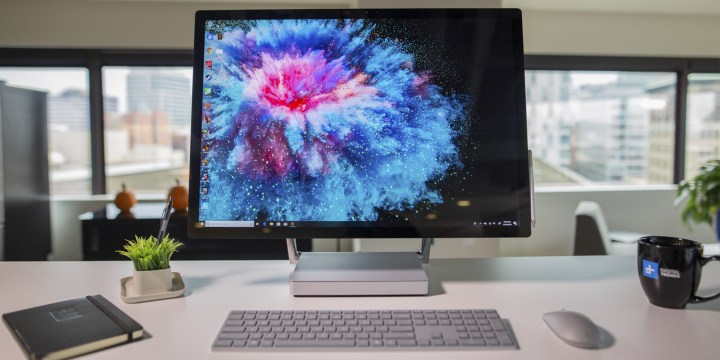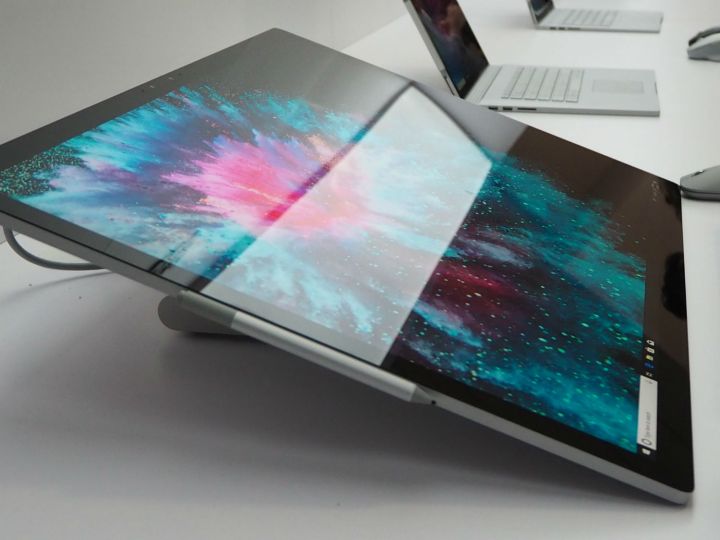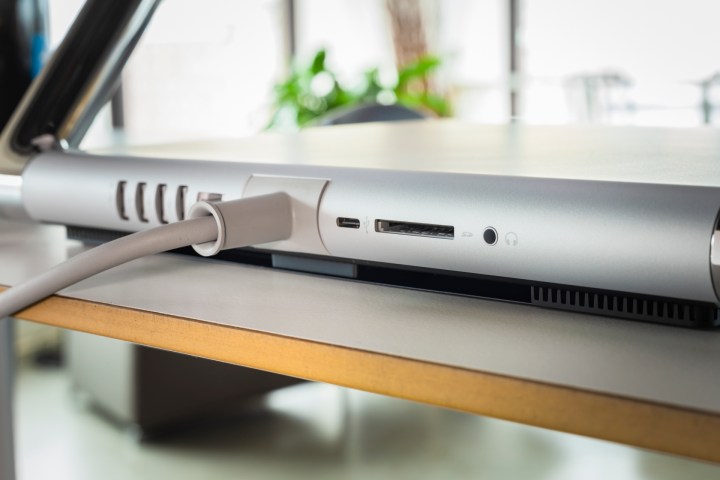The Surface Studio was created for artists and designers, a multi-purpose, slender desktop model at the highest end of Microsoft’s Surface line. Despite some rather weak hardware, the Studio did exactly what it was created to do — give Microsoft a useful niche in that portion of the market, and the Studio 2 only improved on the formula.
But let’s take a look ahead to the Studio 3, and what Microsoft’s upcoming Surface desktop may look like. There have been a few interesting rumors about the Studio 3, and we have a few big wishes of our own, too.
Price and release date

The Studio 2 increased the price from the original model up to $3,499. Microsoft could increase the price again for the Studio 3, but we don’t think that’s very likely. In fact, if other indications are correct, then there’s a good chance Microsoft is looking to lower the price of the Studio 3 and make it a bit more accessible. In the same way Apple has segmented out its iMacs, we’d like to see Microsoft have some more entry-level offerings to flesh out the lineup a bit.
As for a release date, Microsoft has confirmed nothing yet, but rumors suggest that the Studio 3 will be released in 2020. This makes sense, but we’ll have to wait for an official tease or announcement to be certain.
A modular design with a separate monitor

According to that latest reports via Brad Sams’ book Beneath a Surface (get it?), Microsoft is planning on making the Studio 3 modular. What does this mean? Well, as of now, the Surface Studio is an all-in-one, meaning it the display and actual computer are all built into one unit. The rumors suggest that Microsoft has plans to them into two separate products that complement each other but don’t have to be bought together.
This could, of course, making the Studio much more accessible to those with lower budgets, and would also allow people to prioritize what part of the Studio they really want. The most interesting aspect of the Surface Studio is the unique adjustability of the stand, and some may be interested in adding just that to their workstation.
Second, rumors suggest that Microsoft could be adopting a “cartridge” system similar to the on used in the Surface Hub 2. This would allow people to more easily upgrade their Studio hardware as needed, specializing the computer for their own needs. This draws some obvious comparisons to Apple’s modular design for the Mac Pro, which will arrive later in 2019.
Thunderbolt 3 ports

Previous models throughout the Surface line had USB-C connections, but not the ultra-powerful, versatile Thunderbolt 3 version. There’s no good reason for Microsoft to not upgrade to Thunderbolt 3 for all its next-gen Surface models.
As the only desktop in the Surface line, the Studio is perhaps especially fit for a Thunderbolt 3 upgrade, and this will only grow more true in 2020. It will be surprising if Microsoft doesn’t make this change. Microsoft hasn’t added the powerful port to its Surface line yet, but it in a Surface Studio, it would make a lot of sense.
Updated processors

The Studios have always had fairly weak processors for desktops. This is partially because the focus has always been on the display and less on the internals, but also because the small base where the guts are is relatively small, forcing them to rely on laptop parts. While this keeps the design sleek, it severely limits what the PC can be used for. Creative professionals often need the power that comes with some extra cores, which rules out the low-end, outdated processors Microsoft has used in the past.
Microsoft could use Intel’s mobile-friendly Lake processors for the Studio (they are common throughout Surface devices), and this would be likely if Microsoft keeps the design of the Surface Studio 3 relatively similar.
However, we would really like to see the latest desktop processors possible in the Studio 3. If Microsoft does end up moving to a modular design, we could see the company waiting for desktop 10th-gen chips from Intel, or even just the current crop of powerful 9th-gen Coffee Lake-R chips. It’s always tricky to predict what processors future releases will use, so here’s to hoping Microsoft included Intel in the conversation early on.
Upgraded microphones

Another report indicates that Microsoft might be giving the Studio 3 a serious microphone upgrade, switching out the past mics for upgraded MEMS (micro-electro-mechanical systems) microphones. MEMS, which are used on Surface Hubs, are great mics, but they’re large compared to alternatives, and Microsoft didn’t want to disrupt the super-slim profile of the Studio.
However, details reveal that Microsoft has been working on ways to reduce MEMS mic size to a level that consumers will find acceptable for the Studio 3. Better mics mean better voice commands, and better results for using the Studio in boardrooms, conference calls, and presentations.
5K and beyond

The Studio 2 display had a 4,500 x 3,000 resolution. That’s nice, but Microsoft can do better — especially considering that the competing Pro XDR Display launched by Apple in 2019 sports a 6K resolution, and there are monitors with even higher resolutions available. If Microsoft really wants to appeal to designers and similar professionals, they should work at pushing their resolution higher.
We would like to see the Studio 3 offer a 5K resolution or higher: Otherwise, it may struggle to stay competitive as the high-end market embraces more crazy resolution numbers. If Microsoft really is planning on selling the monitor separately, it may have more leeway to add to the resolution this time around.
Editors' Recommendations
- Intel Arrow Lake: everything we know about the 15th-gen chips
- Microsoft Bing and Edge are getting a big DALL-E 3 upgrade
- Microsoft’s executive shake-up casts a shadow on upcoming Surface event
- The most powerful Surface laptop ever may launch later this year
- iMac 27-inch: Everything we know about Apple’s larger, more powerful iMac




